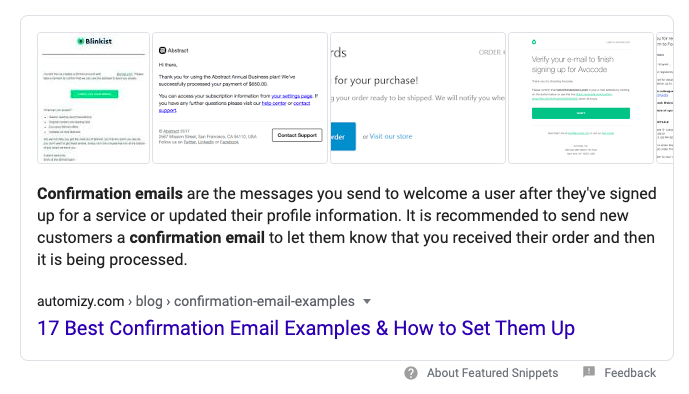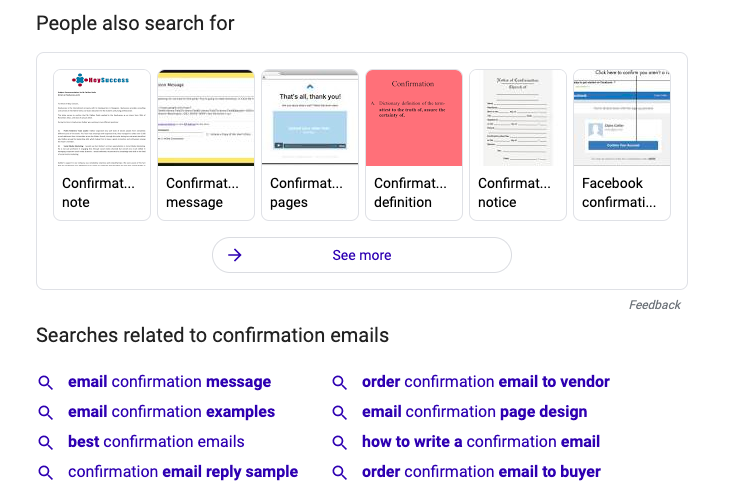
3 Key Elements to a Successful Conversational Marketing Strategy
June 4, 2020What do you think of when you hear the word “evergreen”?
If you’re like me, your mind immediately flashes to a picturesque mountainscape with jagged rocks, snow-white peaks, alpine lakes, and, of course, tons of evergreen trees. (Can you tell I miss living in Colorado?)
But that’s not what we’re talking about in this case, are we? Or wait. We are.
The term “evergreen” refers to a plant that retains its green leaves (or needles) all year-round. The same goes for content marketing.
In this post, I’m sharing why evergreen content is critical for a strong content marketing strategy and how it can help strengthen your blog readership.
Let’s get started.
What is evergreen content?
Evergreen content refers to content that doesn’t go out of date. In other words, it’s content that is always applicable or relatable no matter the season or what’s happening in the world.
Evergreen content can be in the form of blog posts, product reviews, guides, news articles, and more. For the sake of this post, we’re going to focus on evergreen content in a blog post format.
Evergreen topics include things like:
- How to change a tire
- How to propagate a plant
- How to remove a wine stain from your favorite cotton t-shirt (anyone else been there?)
If you’re a B2B SaaS company that sells email marketing software, for example, your evergreen topics might look like these:
- How to build an email list that boosts your conversion rate
- Ten email marketing examples to bookmark for your next campaign inspiration
- How to write a powerful welcome sequence
These are topics that your customers will find useful no matter the season. This content is your foundational content—or the content that leads to other topic ideas.
Of course, the world of software and technology is continuously changing, so you will need to update your content when applicable. But for the most part, the purpose of evergreen content is to provide educational resources for your customers and readers who are not yet customers.
We’ll get into the details of how to create evergreen content in just a minute. First, we need to talk about why it’s vital to your content strategy.
Why is evergreen content important for your content strategy?
We know what evergreen content is, but let’s talk about why it’s essential for your content strategy.
There are two main benefits of evergreen content:
- SEO rankings
- Authority-building
Let’s break down both into more detail.
Evergreen content helps your SEO ranking
Everyone and their 16-year-old niece want to rank on the first page of Google. That’s where the eyeballs are looking. That’s where the sales happen.
But you need a little help from the SEO gods to do just that.
Keywords
By incorporating relevant keywords that you can rank for throughout your content, you help Google understand your content.
For example, if your primary keyword is “dog groomer” and you include that term where applicable throughout your post, that will help Google figure out what your content is about, which can help your ranking (among several other factors).
When you optimize your evergreen content for SEO, you help boost your ranking on Google.
Link Building
If your content is high-quality, accurate, and informative, the better the chances of it being linked to by others in your industry.
The linking of one site to another is also known as a backlink. Backlinks, in essence, validate the quality of a site from one to the other. If Site A links to Site B, it’s saying that it trusts the content and information on Site B enough to share it with readers.
When you create content that is valuable and up-to-date, you’ll likely see a bump in backlinks, which helps with your search ranking.
Site continuity and hierarchy
Evergreen content helps your readers and search engines understand the overall structure of your site.
Picture your site content like a house. Your evergreen content is the foundation of the house, and the other, more time-sensitive material is like the different floors and rooms of the house.
Creating high-quality foundational content structures your site in a way that helps Google understand what your content is about, which helps with your ranking.
Evergreen content helps you build authority
When you create high-quality content that readers refer back to, you build authority in your industry.
Authority-building is done by creating consistent content that your readers trust—and have verified themselves as trustworthy through implementation.
Take the Moz blog, for example. It’s packed with quality content that readers of all SEO skill levels consult when trying to learn and grow their capabilities. Moz’s team of SEO experts share their insights and break down complicated search topics in a digestible format.
The Moz team builds authority by being experts in search while showing readers how their SEO tool can help them implement the things they’ve learned from the blog.
How to create evergreen content
Now that we’ve covered what evergreen content is and why it’s important let’s talk about how to create it.
1. Brainstorm topic ideas
Of course, before you can start writing, you have to think of topic ideas.
Get yourself a piece of paper or a blank Google Doc and start dumping all the ideas that pop into your head relating to your business.
For example, if you’re a SaaS company like ConvertKit, you might consider topics around how to get started with email marketing as evergreen content ideas. Of course, this content will require periodic updates as things evolve, but it’s a solid start.
When thinking of evergreen topics, ask yourself this question: “Will my readers still think this is interesting or relevant a year from now?” That’s a key indicator that a topic is ripe for the long haul.
2. Dive into keyword research
Let’s say you want to write an evergreen blog post about confirmation emails. You’ve got your main topic—or your parent topic—now let’s dig into keyword research.
If you’re using a keyword research tool, like Ahrefs, you can get a solid idea of what you’re dealing with from a keyword perspective as it relates to your topic.

(Source: Ahrefs)
Pay attention to these metrics when researching keywords:
- Keyword difficulty: How tough it’ll be to rank your content for this keyword
- Search volume: How often people search for a topic
- Global volume: How often people search for a topic in a specific location
If you’re using a site like Answer the Public, you’ll see a list of questions like these:
- When to send confirmation emails
- What are confirmation emails
- How to create confirmation emails
And also phrases like these:
- Confirmation emails for [blank]
- Confirmation emails in Shopify
These results can help you determine your primary keyword as well as your supplemental keywords.
In addition to these tools, good ol’ Google is another way to fine-tune your keyword list. Pay attention to the different components of a Google SERP.
The content within the featured snippet of a SERP is the “leader” of the page. In other words, they are ranking the highest for that keyword.

(Source: Google)
Take note of how the featured snippet is formatted. In this case, our keyword “confirmation emails” is spelled out in a definition format within the post, but that might not always be the case.
There are three types of featured snippets:
- Paragraph
- List
- Table
It’s smart to see how your competitors (the ones who secured featured snippets) have modeled their content and go from there.
Also, pay attention to the “People also search for” and “Searches related to this content” sections at the bottom of the SERP.

(Source: Google)
Remember to ask yourself: Will readers find this helpful in 6 months, 12 months, longer?
3. Start writing
Once you’ve got your keywords, you can start building your outline and tackling your first draft.
Here are a few of my favorite resources for outlining and writing long-form content:
- How to Write an Outline | Kaleigh Moore
- Website Content Checklist | Gill Andrews
- How to Write Catchy Headlines and Blog Titles Your Readers Can’t Resist | Hubspot
- 12 Methods to Get from Blank Page to First Draft | Copyblogger
Best practices for creating high-quality evergreen content
As with anything, there are plenty of do’s and don’ts when creating evergreen content.
Before you hit the keyboard and start working, let’s look at a few of those best practices.
Create high-quality content
Long gone are the days of throwing up a half-baked blog post and seeing spikes in traffic and conversions. Creating value-packed content that your readers will love and will please search engines takes time and effort. Lots of time and effort.
High-quality content will yield results far beyond the labor put into it.
Here are a few grammatical and structural tips to keep in mind:
- Avoid run-on content that meets a word “requirement” and instead opt for content that is meaningful and educational. Make every sentence earn its keep!
- Keep seasonal language and angles out of your content. That kind of language automatically revokes its evergreen nature.
- Add visuals, images, and screenshots to strengthen your content. Plus, visuals help break up blocks of text, which is especially helpful when writing long-form content.
Refresh your content
Things can’t stay evergreen forever — things evolve and change, especially in the SaaS world. Make it part of your content marketing strategy to analyze your existing content and update it regularly.
Tools like Ahrefs can help you determine which content needs to be updated. Content auditing has never been easier.
Monitor your content
As with any other component in marketing, tracking the performance of your evergreen content is critical. Use an analytics tracking tool, like Google Analytics or Fathom Analytics, to make this easier.
If your data is accurate, you’ll be able to make better decisions around your content.
Evergreen content paves the way for content marketing success
I won’t dance around it—content marketing is a time-consuming tactic. And with the scores of blog posts out there, it can feel impossible to see any success from your efforts. That couldn’t be further from the truth.
Start with what you know. Start with evergreen content. Start with the basics. Once you have those pieces in place, you’ll see how the rest is supposed to line up.
Looking for a B2B SaaS Copywriter to help with your next project? Send me a message and let’s get the ball rolling.




